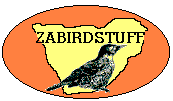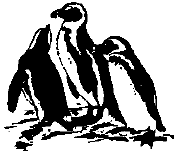 SAfrican
Birding Spots
SAfrican
Birding Spots
 SAfrican
Birding Spots
SAfrican
Birding Spots
Western Cape (Regional Introduction)
While species numbers in the Western Cape may not be as high as in the eastern parts of South Africa, the proportion of endemics by far outweighs this deficiency- 60 of southern Africa's 86 endemics and 42 of its 84 near-endemics occur in the region.
These are mostly centered in two habitats- the fynbos vegetation (or Cape Floral Kingdom), largely restricted to the Western Cape mountains, and Karoo semi-desert, which covers a huge area of central South Africa.
Fynbos supports several of its own endemics including the spectacular Cape Sugarbird, Orangebreasted Sunbird and Cape Rockjumper. Most of them occur on the Cape Peninsula where they are easily found at localities such as the Kirstenbosch National Botanical Gardens, but others such as the rockjumper and Victorin's Warbler will require a trip to the Hottentot's Holland mountains east of Cape Town.
The Karoo has a huge collection of endemics, such as Rufouseared Warbler, Karoo Eremomela, and Karoo Korhaan. Most of them are widespread throughout the Karoo, but several larks, such as Red and Sclater's, are restricted to the north-western Bushmanland region. The closest area of Karoo to Cape Town is approximately two and a half hour's drive from the city.
 A
number of endemics are also occur coastally (eg Bank, Crowned and Cape
Cormorants, Jackass Penguin and African Black Oystercatcher), and all of
these can be found on the Cape Peninsula.
A
number of endemics are also occur coastally (eg Bank, Crowned and Cape
Cormorants, Jackass Penguin and African Black Oystercatcher), and all of
these can be found on the Cape Peninsula.
Some localities to consider visiting on a 2-3 day stay in Cape Town would be the following:
Kirstenbosch National Botanical Gardens (fynbos/forest) Cape of Good Hope Nature Reserve (fynbos/marine) Sir Lowry's Pass region (fynbos) West Coast National Park (strandveld/marine) Ceres Karoo region (Karoo) Strandfontein Sewage Works (waterbirds)
A pelagic trip is also essential if time and finances permit. Thanks to the Benguella upwelling off the Cape's west coast, some of the best seabirding in the world can be had on a day's boat trip out of Cape Town, particularly in winter when flocks of thousands of albatrosses, petrels, and shearwaters gather to feed around trawlers. Contact the Cape Bird Club to find out whether any trips are planned.
Land-based seawatching is best during the winter north-westerly storms, particularly off Cape Point in the Cape of Good Hope Nature Reserve. Evidently, a telescope is vital.
"Birds of the south-western Cape and where to watch them", published by the Cape Bird Club and Birdlife South Africa, is inexpensive and full of very useful birding information.